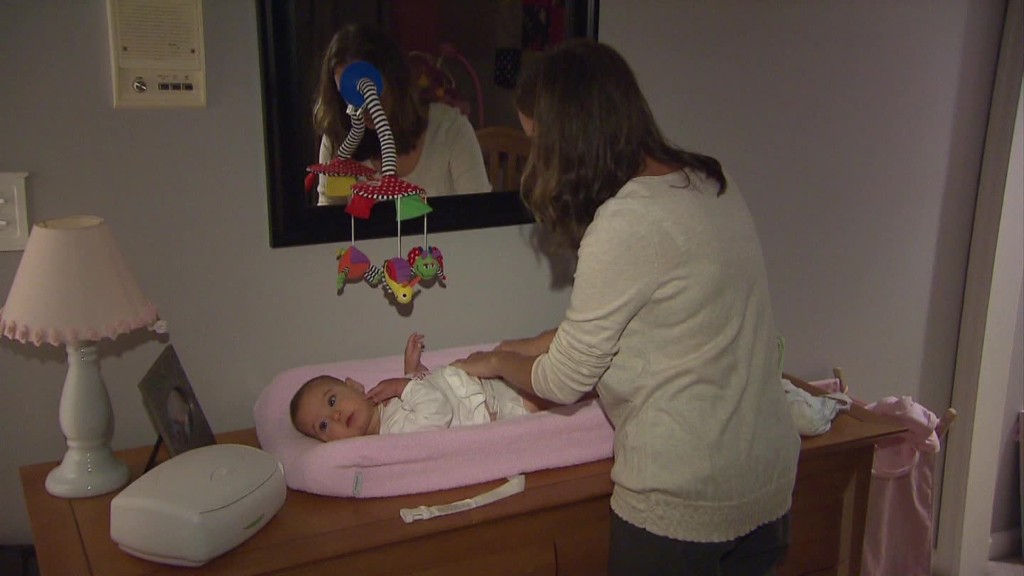
Ask most working parents what makes family life hard, and you get two responses: Not having paid leave from work and figuring out how to pay for child care.
Paid family leave and affordable child care have become hot topics as advocates have pushed for more supportive state and federal laws, and private-sector employers have bolstered their family-friendly benefits to attract Millennial talent.
Hillary Clinton has taken note. And as of this week, so has Donald Trump.
Each has proposed what they'd like to do to help parents with child care issues.
What Clinton would do
Clinton has made several proposals. Her three main ones are:
Capping the cost of child care: Under her plan, families would not pay more than 10% of their income in child care costs.
In addition, she has pledged to increase access to on-campus child care for parents who are going to college. The Clinton campaign estimates that will benefit 250,000 children.
She'd provide these benefits through government subsidies and various forms of tax relief that she has yet to detail.
Related: How paid family leave could become a reality in the U.S.
Guaranteeing paid family leave: Under the Family and Medical Leave Act, a majority of U.S. workers have the right to take up to 12 weeks of unpaid leave to care for a new child or to attend to a family member's serious medical needs or their own.
But only a small percentage of employers pay workers during their leave.
As a result, roughly 25% of new mothers and far more new fathers can't afford to take off more than two weeks when they have a baby.
Clinton wants to guarantee that 12 weeks be paid with at least two-thirds of a worker's current wages up to a cap.
She would fund that pledge by imposing higher taxes on the rich.
Right now, only 60% of workers are eligible for FMLA unpaid leave because the law doesn't cover businesses with fewer than 50 employees. Clinton's campaign has not yet specified what size employers, if any, she would exempt from her guaranteed paid family leave plan.
Universal Pre-K: In many places, until a child enters kindergarten at age 5, working parents must pay for daycare, a babysitter or tuition for preschool, which research shows can help children educationally and developmentally.
Related: Hillary Clinton's economic plan explained
But preschool can be cost prohibitive for lower-income families.
Clinton wants to provide high-quality pre-K education for all 4-year-olds in the country. The plan would be rolled out over 10 years.
States would receive new federal funding to expand access to such programs. And Clinton proposes to pay for it by increasing taxes on high-income households.
Child care advocates applaud the idea, but would prefer that pre-K extend to 3-year-olds as well, and that childcare workers be paid a living wage.
What Trump would do
Donald Trump on Monday said he'd offer a tax break to parents who pay for child care.
The average cost of full-time child care nationally is over $17,000 for an infant and over $12,000 for a 4-year-old, according to ChildCareAware of America. Costs vary widely by state.
"My plan will ... help reduce the cost of child care by allowing parents to fully deduct the average cost of child care spending from their taxes," Trump said in a speech in Detroit.
There has been confusion among tax and child care experts as to how the break would work, because the candidate, the campaign and an outside economic adviser each described the break very differently. Critics assumed that the tax break would be more likely to benefit those who are well off.
Related: It's good to be a working parent in Europe
The Trump campaign tried to clarify the issue to CNNMoney on Tuesday. While details are still being finalized, a spokesman confirmed the following:
-- Parents could write off the average cost of child care in their state for their child's age. Anyone with child care expenses who ends up owing income tax could take this benefit, even if they don't itemize their deductions.
-- Low-income filers, who often end up owing nothing in income tax, could instead take their deduction against their payroll taxes for Social Security and Medicare.
Despite these clarifications, tax experts still said the break as described may not benefit lower income parents very much for at least two reasons.
First, they have to pay child care costs throughout the year, so waiting until tax time for relief may be "too late to be much help for needy families," said Elaine Maag, a senior research associate at the Tax Policy Center.
Second, what low-income filers pay in payroll taxes is typically much lower than what they owe in child care costs. "If you earned $20,000 in a year, your share of payroll taxes would be about $1,500. That would be the maximum amount of money that could be delivered through a payroll tax deduction," Maag said.
It could be even less -- just $750 -- if an earlier statement from the campaign applies, she noted. That statement promised that parents could "exclude childcare expenses from half of their payroll taxes."
